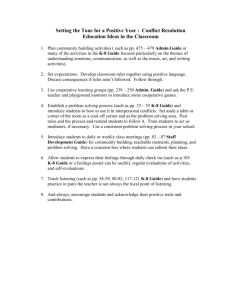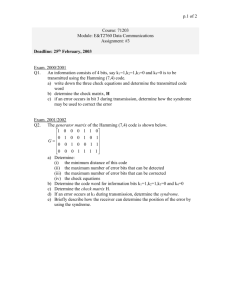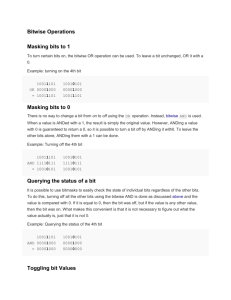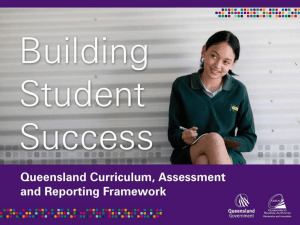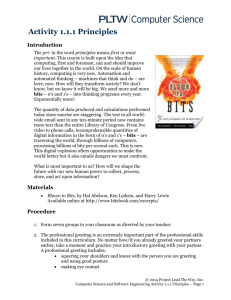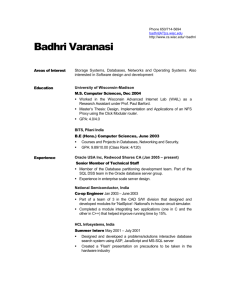Change Game PPT 07.25.12 - Seaford School District, Seaford
advertisement
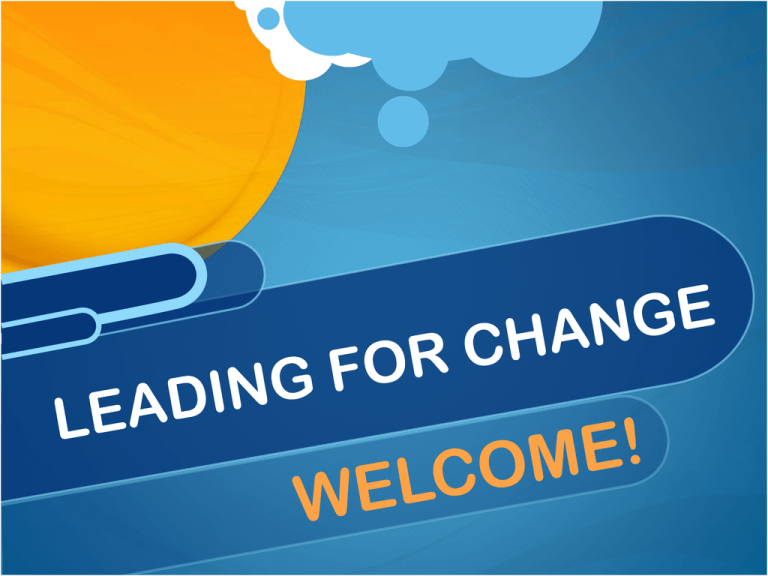
2 Outcomes By the end of this training, participants will be able to: • Identify and analyze the phases of change individuals experience during an innovation period. • Apply learning from the research that informs managing change to support the individual and group needs in our schools • Explain the relationship between the change process and their role in the Seaford School District 3 Welcome, Agenda & Objectives Activator: 4 Corners Setting the Context: Introduction to Change Research Playing the Game– Year One Lunch Playing the Game - Year 2 ACTIVATOR: 4 CORNERS Read each quote and reflect on the relationship of each to our work. Choose one quote that resonates with you the most and reflect on why you agree with it. -------------------------------------------------------------------------------------------Move to that “numbered” corner to reflect with others: Discuss why you chose this quote. Discuss a successful change initiative with which you have been involved and what made it successful. Chart challenges SDTs faced this year as they attempted to implement change. Place a check beside any of those challenges you have faced from the district perspective. Our roles: Catalyst for Change: Guiding school staff in assessing effectiveness of instructional practices and moves staff to implement necessary systemic changes Coach Setting the Context: A little bit of research: Components of Successful Change Stages of Use Effective Leadership Information Attention to People Interest Using Systems Thinking Preparation Using and Understanding Process Early Use Routine Use The 3 I’s of Organizational Change Michael Fullan • An innovator and leader in teacher education • Researcher, consultant, trainer and policy advisor in the area of educational change • Has published widely on the subject of school change Our Roles Supporting the 3 Phases: Coach Initiation Implementation Institutionalization Making Change for School Improvement - A Simulation that: is based on research about organizational change in real schools should help us better manage change efforts in schools allows us to “try out” real life strategies for changing policies and practices in schools - complete with administrators, staff, and community members Playing the Game Your table group represents a “change committee” that … … conducts a variety of activities to influence people in the school system to implement a change effort The Game Board 24 people in the Verifine School District: District Administration K-8 School Staff High School Staff Stages they go through: Information Interest Preparation Early Use Routine Use Other Materials You Will Need: admin K-8 Players pieces 40 “bits” Players “Instructions, Social information, and diagnostic information for each person “People” cards – 1 set “Activities Sheet” – 1 Strategy Record Sheet - 1 Stubens capture sheet H.S. Check “bits” Read material provided Have a short discussion at your tables about how the information you have so far might inform you Set-up the Game Place characters The “Monitor” You will request “moves” in the form of activities from the monitor. The monitor will determine if you can make that move. You will receive cards from the monitor that will tell you if people in the district are “moving” and if there is any benefit to students based on those moves. You pay for each “move” or “activity” with your “bits” After the first year of the game, your bits are replenished to begin the second year. Student Benefits “STUBENS” The assumption is that the more effectively your team manages the change process, the more benefits there are to the students in the Verifine School District. Organize yourselves to play! Keeping track on the “Strategy Record Sheet” “Runner” Moving the player pieces Any other role you think is important Take a 15 minute break! YEAR 1 Let’s Play ! Mid-point Debriefing Where were you blocked? Why? When were you successful? Why? What does your experience so far suggest about the change process? - for the school? - for the individuals involved? 20 YEAR 2 Let’s Continue! 22 End of Game - Debrief How did you do? Which activities were particularly successful? - when? - for whom? What was frustrating? Why? What did you learn about individual change? What did you learn about school change? How can you apply this information to a situation in your school? 23 Time for LUNCH!!! Let’s look at some more research: How did these factors affect your results AND how do they relate to the role of the SDT? 1. time & persistence 2. individuals - different needs at different stages 3. choose strategies to meet people’s needs 4. needs admin support/approval 5. critical mass of support as important as admin support 6. someone needs to take responsibility 7. objective is to benefit students - not just convert staff 8. successful change planned and managed Learnings Built Into the Making Change Game CHANGE: is a PROCESS, not an event is made by INDIVIDUALS first, then institutions is a highly PERSONAL experience entails DEVELOMENTAL growth in feelings and skills Learnings Built Into the Making Change Game INTERVENTIONS MUST BE RELATED TO: •The PEOPLE first •The INNOVATION second 28 Adopter Types Character Names Innovator: eager to try new ideas, open to change, and willing to take risks; usually perceived as naïve or a little crazy and, therefore, not well integrated into the social structure ? Leader: open to change, but more thoughtful about getting involved; trusted by other staff and sought for advice and opinions ? Early Majority: cautious and deliberate about deciding to adopt an innovation; tends to be a follower, not a leader ? Late Majority: skeptical of adopting new ideas and “set in their ways;” can be won over by a combination of peer pressure and administrative expectations ? Resister: suspicious and generally opposed to new ideas; usually low in influence and often isolated from the mainstream ? Look back at your game board … Any ah-has? Would it have helped you to know ahead of time who fit into each of these categories? If so, what would you have done differently? Handout People will feel awkward, ill-at-ease, and selfconscious. People will think about what they have to give up. People will feel alone; even if everyone else is going through the changes. People can handle only so much change. People are at different levels of readiness for change. People will be concerned that they don’t have enough resources (time, money, skills, etc.). If you take the pressure off, people will revert to old behavior. Stages of Concern 6. Refocusing 5. Collaboration 4. Consequence 3. Management 2. Personal 1. Informational 0. Awareness 31 Stages of Concern Expressions of Concern Impact Refocusing Routine Refinement Integration Renewal I have some ideas about something that would work even better. Collaboration I am concerned about relating what I am doing with what other instructors are doing. Consequence How is my use affecting kids? How can I refine it to have more impact? Management I seem to be spending all my time in getting materials. Personal How will using it affect me Informational I would like to know more about it. Awareness I am not concerned about it (the innovation) Task Mechanical Self No Use Orientation Preparation Stages of Concern Levels of Use The 3 I’s of Organizational Change Comparison Handouts The Stages of Concern/Levels of Use 34 Take a 15 minute break! Change Analysis Worksheet: Beginning to Plan for a Change Effort 36 Reflection: What is the relationship between school change and professional development? What is the relationship between school change and the various roles you play as a professional developer?
